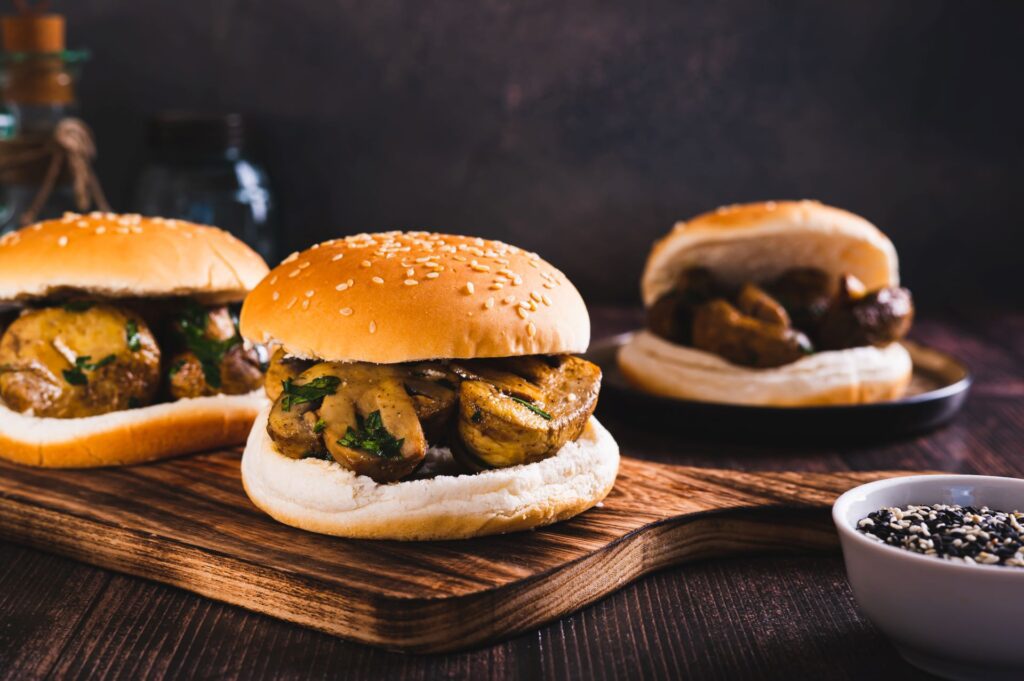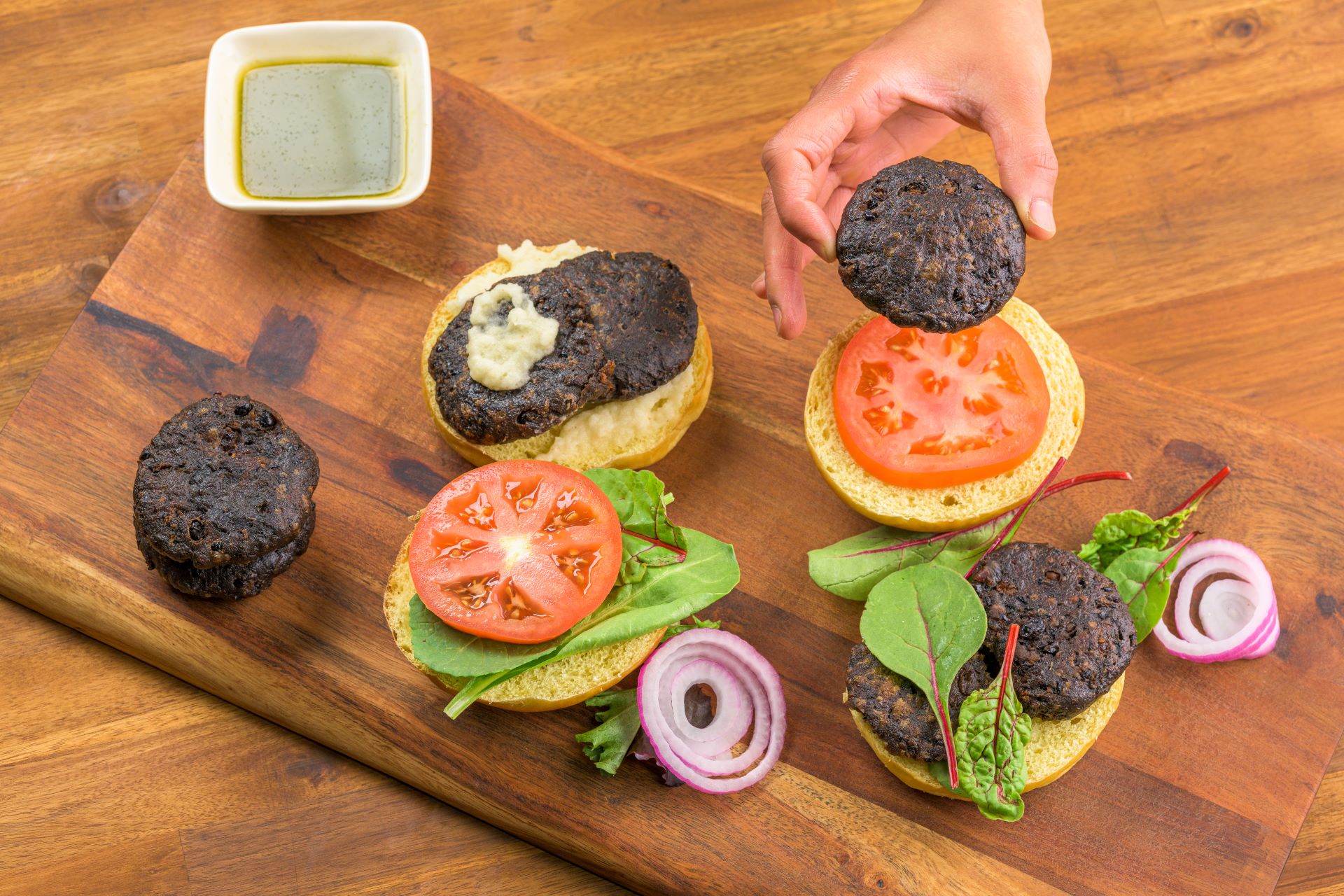Meaty Mushrooms: The Ultimate Guide to Using Fungi as a Hearty Meat Substitute. The culinary landscape is continually evolving, and one of the most exciting developments is the rise of the mushroom as a formidable meat substitute. No longer relegated to side dishes, specific mushroom varieties are taking center stage, offering substantial texture, deep flavors, and remarkable versatility. We delve into the world of meaty mushrooms, exploring how these fantastic fungi can transform vegetarian and plant-forward cuisine, providing satisfying alternatives in dishes traditionally reliant on meat. Join us as we uncover the best types, preparation methods, and recipe ideas to fully harness the potential of these earthy powerhouses.
Understanding the Appeal: Why Mushrooms Shine as Meat Alternatives
Mushrooms possess a unique combination of characteristics that make them exceptionally well-suited for replacing meat. Their inherent umami quality, often described as the fifth taste, provides a savory depth comparable to that found in cooked meats. This natural savoriness forms a foundational flavor profile that is both satisfying and complex.
Furthermore, the texture of many mushrooms is remarkably meat-like. Varieties such as Portobello and King Oyster mushrooms boast a firmness and chewiness that mimics the bite of steak or chicken. Others, like Lion’s Mane, can be shredded to resemble pulled pork or even crab meat. This textural mimicry is crucial for creating dishes that feel substantial and fulfilling.
Beyond their innate qualities, mushrooms are culinary chameleons. Their porous structure readily absorbs marinades, spices, and cooking liquids, allowing them to take on a vast array of flavor profiles. Whether aiming for smoky barbecue notes, rich wine reductions, or spicy chili infusions, mushrooms adapt beautifully, integrating seamlessly into diverse recipes. From a practical standpoint, they are relatively quick-cooking compared to many meat preparations, offering convenience alongside flavor.
Spotlight on Star Varieties: The Best Mushrooms for Meat Substitution
While many mushrooms exist, certain types stand out for their distinctly meaty attributes. Understanding their individual profiles allows for targeted selection based on the desired culinary outcome.
Portobello Mushrooms: The Burger and Steak Stand-In
Perhaps the most widely recognized meat substitute, the Portobello mushroom is essentially a mature Cremini. Its large, flattened cap, often spanning several inches, makes it a natural choice for vegetarian burgers and mushroom steaks.
- Texture & Flavor: Portobellos possess a dense, satisfyingly chewy texture when cooked. Their flavor is deeply earthy and savory, intensifying upon roasting or grilling.
- Best Uses: Ideal for grilling whole as burger patties, slicing thickly for steaks, roasting, stuffing, or chopping into stews and sauces.
- Preparation Tips: Gently wipe clean with a damp cloth or paper towel; avoid washing, as they absorb water. The dark gills can be scraped out if desired (they can release dark liquid during cooking), and the woody stem should be removed (though it can be chopped and used in fillings or stocks). Marinating Portobellos for at least 30 minutes before grilling or roasting significantly enhances their flavor.
Cremini Mushrooms (Baby Bellas): The Versatile Workhorse
Cremini mushrooms, sometimes called Baby Bellas, are younger versions of Portobellos. They offer a more nuanced flavor than common white button mushrooms and possess a firmer texture.
- Texture & Flavor: Firmer than white mushrooms with a deeper, earthier taste. They hold their shape well during cooking.
- Best Uses: Exceptionally versatile. Excellent sautéed, roasted, added to pasta sauces (like Bolognese), incorporated into stews, used in omelets, chopped for duxelles (a finely minced mushroom mixture used in dishes like Beef Wellington), or sliced onto pizzas.
- Preparation Tips: Wipe clean. Can be used whole (if small), sliced, or quartered depending on the recipe. Sautéing over medium-high heat develops their flavor best.

Shiitake Mushrooms: Umami Powerhouses
Prized in Asian cuisine for centuries, Shiitake mushrooms deliver an intense savory, smoky flavor and a pleasantly chewy texture.
- Texture & Flavor: Distinctly chewy, almost leathery when raw, becoming tender yet firm when cooked. Known for their powerful umami and slightly smoky notes.
- Best Uses: Superb in stir-fries, noodle dishes, savory broths, risottos, and gravies. They can also be roasted or sautéed on their own. Dried shiitakes offer an even more concentrated flavor, and their soaking liquid makes a fantastic broth base.
- Preparation Tips: Stems are typically tough and woody and should be removed before cooking (save them for flavoring stocks). Caps should be wiped clean. Rehydrate dried shiitakes in hot water before use.
Oyster Mushrooms: Delicate Flavor, Shredded Potential
Oyster mushrooms grow in beautiful, fan-shaped clusters. They come in various colors, including pearl, pink, and yellow, each with subtle flavor differences.
- Texture & Flavor: Velvety, tender texture with a delicate, slightly sweet, and subtly anise-like flavor. They become wonderfully silky when sautéed. Their structure allows them to be easily shredded.
- Best Uses: Excellent when sautéed or pan-fried until golden brown and slightly crisp. Perfect for shredding after cooking to mimic pulled pork or chicken for sandwiches or tacos. Also wonderful in pasta dishes, soups, and light stir-fries.
- Preparation Tips: Gently pull the clusters apart into individual caps or smaller groups. Wipe clean. Cook quickly over medium-high heat to prevent them from becoming rubbery.
King Oyster Mushrooms (Eryngii): The Scallop Mimic
King Oyster mushrooms, also known as King Trumpets or Eryngii, are distinguished by their thick, dense, and remarkably firm stems, which comprise most of their edible portion. The caps are small and relatively underdeveloped.
- Texture & Flavor: The stem offers a resilient, meaty bite, often compared to scallops or even abalone when sliced into rounds and seared. The flavor is mild, slightly nutty, and savory.
- Best Uses: The stems are the star. Slice them into thick rounds (“scallops”) for searing or grilling. Cut them lengthwise for grilling “steaks.” Shred them for pulled mushroom preparations or chop finely for use in pâtés or fillings. Their firm texture holds up extremely well to various cooking methods.
- Preparation Tips: Wipe the entire mushroom clean. The stem is entirely edible and prized for its texture. Score the surface of rounds before searing to promote browning and mimic the look of seared scallops.
Lion’s Mane Mushrooms: The Seafood Alternative
Lion’s Mane is a unique-looking mushroom, resembling a cascade of white icicles or, as the name suggests, a shaggy mane. Its texture is unlike any other common mushroom.
- Texture & Flavor: Possesses a stringy, slightly spongy, yet tender texture that remarkably resembles crab or lobster meat when pulled apart or sliced. The flavor is mild, subtly sweet, and savory, often described as seafood-like.
- Best Uses: Fantastic as a substitute in vegan “crab” cakes, “lobster” rolls, or simply pan-seared with garlic and butter (or olive oil). It absorbs flavors beautifully.
- Preparation Tips: Clean gently with a brush or damp cloth. Can be sliced into steaks or pulled apart into shreds. Sautéing or pan-frying is ideal; pressing gently with a spatula helps release water and achieve better browning and texture.
Mastering Culinary Techniques for Meaty Mushrooms
How mushrooms are cooked significantly impacts their final texture and flavor concentration. Employing the right techniques elevates them from simple vegetables to truly satisfying meat alternatives.
Sautéing and Pan-Frying
This technique is excellent for developing color and flavor through the Maillard reaction.
- Method: Heat fat (oil or butter) in a skillet over medium-high heat. Add mushrooms in a single layer – do not overcrowd the pan, as this causes steaming instead of browning. Cook, stirring occasionally, until deeply browned and tender. Season towards the end of cooking.
- Best For: Cremini, Shiitake, Oyster, sliced King Oyster, Lion’s Mane.
Roasting
Roasting concentrates the mushrooms’ natural sugars and umami flavors while creating a firmer, meatier texture.
- Method: Toss mushrooms with oil and seasonings. Spread in a single layer on a baking sheet. Roast in a hot oven (typically 400-425°F or 200-220°C) until tender, browned, and slightly shrunken.
- Best For: Portobello (whole or sliced), Cremini, Shiitake, King Oyster (sliced or whole).
Grilling
Grilling imparts a desirable smoky flavor and attractive char marks.
- Method: Brush mushrooms with oil or marinade. Grill over medium-high heat, turning occasionally, until tender and marked by the grill. Use skewers for smaller pieces or grill baskets.
- Best For: Whole Portobello caps, thick slices of King Oyster stems, skewers with Cremini or Shiitake.
Braising and Stewing
Slow cooking allows mushrooms to absorb surrounding flavors fully, adding depth and body to liquids.
- Method: Brown mushrooms first if desired, then add them to braising liquids, stews, or slow-cooker recipes. They will release their own savory juices and soak up the flavors of the dish.
- Best For: Cremini, Shiitake, Portobello (chopped). Their robust structure holds up well to longer cooking times.
Smoking
For an intensely savory, almost bacon-like flavor, consider smoking mushrooms.
- Method: Use a traditional smoker, a grill set up for indirect heat with wood chips, or incorporate liquid smoke into marinades before roasting or frying.
- Best For: Shiitake, King Oyster, Portobello slices.
Transforming Classic Dishes with Meaty Mushrooms
The true potential of meaty mushrooms unfolds when they are used creatively in familiar recipes.
- Ultimate Mushroom Burgers: Grilled or roasted marinated Portobello caps form the perfect patty. Enhance with umami-rich toppings like caramelized onions and vegan Worcestershire sauce.
- Rich Mushroom Bolognese: Finely chopped Cremini and Shiitake mushrooms, sautéed with aromatics and simmered in tomato sauce and red wine, create a deeply flavorful, hearty pasta sauce.
- Savory Pulled Mushroom Sandwiches: Shredded Oyster or King Oyster mushrooms, cooked until tender and then tossed in your favorite barbecue sauce, make an irresistible filling for buns.
- Flavorful Mushroom Tacos/Fajitas: Sliced and seasoned Portobellos, Creminis, or Oyster mushrooms sautéed with peppers and onions provide a satisfying filling for tortillas.
- Elegant Mushroom Wellington: A showstopper featuring a whole roasted Portobello or a rich duxelles made from Creminis, encased in puff pastry.
- Crispy Mushroom “Bacon”: Thinly sliced Shiitake or King Oyster mushrooms marinated in soy sauce, liquid smoke, maple syrup, and spices, then baked until crisp, offer a smoky, savory crunch.
Nutritional Considerations: The Health Profile of Mushrooms
Beyond their culinary merits, mushrooms offer notable nutritional benefits. They are naturally low in calories, fat-free, and cholesterol-free. They provide a source of B vitamins (like riboflavin, niacin, and pantothenic acid), essential minerals including selenium (a potent antioxidant) and potassium (important for fluid balance and nerve signals), and dietary fiber. While not as high in protein as meat, they contribute to overall protein intake and offer a wealth of micronutrients often lacking in highly processed meat alternatives. Their antioxidant compounds further support overall health and well-being.
Procurement and Preservation: Selecting and Storing Mushrooms
Maximizing the meaty potential of mushrooms starts with selection and storage.
- Selection: Choose mushrooms that are firm, plump, and free from blemishes or slimy spots. Avoid mushrooms that appear dried out or shriveled. Portobellos should feel heavy for their size.
- Storage: Store mushrooms in a paper bag or their original porous packaging in the main compartment of the refrigerator (not the crisper drawer, which can be too moist). Plastic bags trap moisture, leading to quicker spoilage. Use most fresh mushrooms within a week for optimal texture and flavor.
Embracing the Fungal Frontier
Mushrooms offer an extraordinary opportunity to create robust, flavorful, and deeply satisfying dishes without relying on traditional meats. Their diverse textures, ranging from the dense bite of a Portobello to the shreddable structure of an Oyster mushroom, combined with their capacity to absorb flavors, make them invaluable assets in the modern kitchen. By selecting the appropriate variety and employing effective cooking techniques, we can unlock the full meaty potential of these remarkable fungi, enriching our diets and expanding our culinary horizons. Explore the possibilities, experiment with different types, and discover the delicious power of meaty mushrooms.



